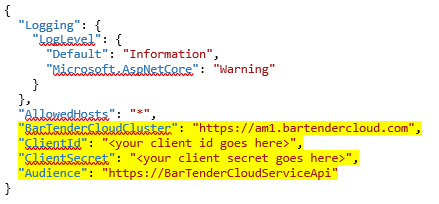C# Web-Based Application Example |
At a minimum, any web applications that you want to integrate with BarTender Cloud must provide support for users to sign in and sign out. This topic demonstrates how to make the necessary changes to a sample generic C# application (called "CodeFlow") to support sign-in and sign-out operations and interact directly with BarTender Cloud, and it provides code snippets that demonstrate how to connect to endpoints for the Librarian API. These changes enable the application to support authentication and the identity provider that is responsible for creating your access token.
The goal of this example is to help you successfully use your own web application to authenticate and make a call to the BarTender Cloud REST API.
The CodeFlow application is a generic C# web application that was configured to interact with the BarTender Cloud REST API. This model-view-controller (MVC) sample application was built using Microsoft Visual Studio 2022 and .NET Core 8.0.
When you decompress this file, you will find a standard MVC web application. After you open the solution file in Visual Studio, you can compile and run it to confirm that everything is working.
 Example Requirements
Example Requirements
 Update the appsettings.json File
Update the appsettings.json File
 Important Terms and Definitions
Important Terms and Definitions
 Background Reading
Background Reading

